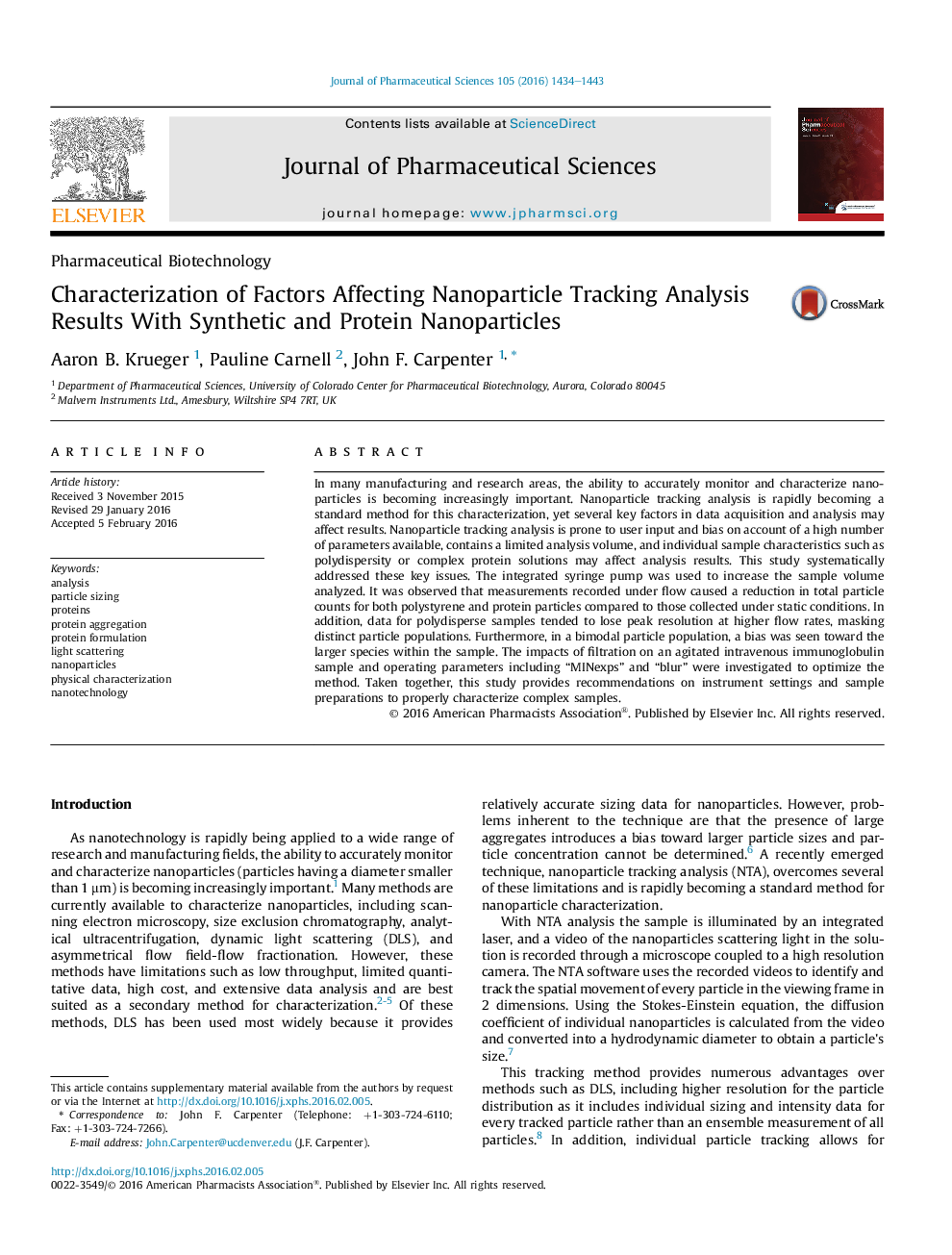| Article ID | Journal | Published Year | Pages | File Type |
|---|---|---|---|---|
| 2484489 | Journal of Pharmaceutical Sciences | 2016 | 10 Pages |
Abstract
In many manufacturing and research areas, the ability to accurately monitor and characterize nanoparticles is becoming increasingly important. Nanoparticle tracking analysis is rapidly becoming a standard method for this characterization, yet several key factors in data acquisition and analysis may affect results. Nanoparticle tracking analysis is prone to user input and bias on account of a high number of parameters available, contains a limited analysis volume, and individual sample characteristics such as polydispersity or complex protein solutions may affect analysis results. This study systematically addressed these key issues. The integrated syringe pump was used to increase the sample volume analyzed. It was observed that measurements recorded under flow caused a reduction in total particle counts for both polystyrene and protein particles compared to those collected under static conditions. In addition, data for polydisperse samples tended to lose peak resolution at higher flow rates, masking distinct particle populations. Furthermore, in a bimodal particle population, a bias was seen toward the larger species within the sample. The impacts of filtration on an agitated intravenous immunoglobulin sample and operating parameters including “MINexps” and “blur” were investigated to optimize the method. Taken together, this study provides recommendations on instrument settings and sample preparations to properly characterize complex samples.
Keywords
Related Topics
Health Sciences
Pharmacology, Toxicology and Pharmaceutical Science
Drug Discovery
Authors
Aaron B. Krueger, Pauline Carnell, John F. Carpenter,
